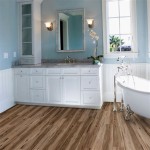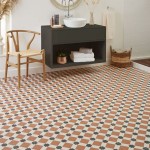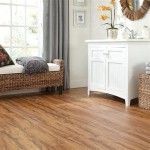```html
폼 언더레이 우드 플로어링 (Foam Underlay Wood Flooring): A Comprehensive Guide
Foam underlay wood flooring, translated as 폼 언더레이 우드 플로어링 in Korean, is a popular flooring solution known for its comfort, noise reduction, and ease of installation. It combines the aesthetic appeal of wood flooring with the practical benefits of a foam underlayment. This article provides a comprehensive overview of foam underlay wood flooring, covering its key components, advantages, types, installation considerations, and maintenance practices.
The core of this flooring system lies in the integration of a wood flooring surface with a foam underlayment. The wood flooring can range from solid hardwood to engineered wood or even laminate options that mimic the look of wood. The foam underlayment, typically made from materials like polyethylene (PE) or ethylene-vinyl acetate (EVA), provides cushioning, insulation, and sound dampening qualities. This combination offers a more comfortable and quieter flooring experience compared to traditional hard flooring surfaces.
The selection of materials for both the wood flooring and the foam underlayment is crucial for optimal performance. The type of wood, its thickness, and the finish applied will influence the durability and aesthetic appeal of the floor. Similarly, the density, thickness, and composition of the foam underlayment will affect its ability to absorb impact, reduce noise, and provide thermal insulation. Understanding these factors is essential for making informed decisions about foam underlay wood flooring.
Key Point 1: Advantages of Foam Underlay Wood Flooring
The primary advantages of foam underlay wood flooring stem from the unique combination of a wooden surface and a foam underlayment. These advantages contribute to its popularity in both residential and commercial settings.
Enhanced Comfort: The foam underlayment provides a cushioned surface that is more comfortable to walk on compared to traditional hard floors. This cushioning effect reduces strain on joints and muscles, making it a desirable choice for areas where people spend a significant amount of time standing or walking. The added comfort also contributes to a more pleasant living or working environment.
Noise Reduction: Foam materials are excellent at absorbing sound waves. The underlayment acts as a barrier that reduces impact noise, such as footsteps, and airborne noise transmission between floors. This is particularly beneficial in multi-story buildings, apartments, and homes with active families. The reduction in noise pollution can significantly improve the quality of life for occupants.
Thermal Insulation: The foam layer provides a level of thermal insulation, helping to maintain a consistent temperature in the room. This can lead to energy savings by reducing the need for heating or cooling. The insulating properties also contribute to a more comfortable indoor environment, especially in colder climates.
Ease of Installation: Many foam underlay wood flooring systems are designed for easy installation, often utilizing click-lock or floating floor methods. This simplifies the installation process and can reduce labor costs. The easy installation makes it a popular choice for DIY enthusiasts and contractors alike. Furthermore, some foam underlayments incorporate moisture barriers, further streamlining the installation process.
Moisture Resistance: Certain foam underlayments are manufactured with moisture-resistant properties, which helps to protect the wood flooring from moisture damage. This is particularly important in areas prone to high humidity or moisture exposure. The moisture resistance properties can extend the lifespan of the flooring and prevent costly repairs.
Key Point 2: Types of Foam Underlayments for Wood Flooring
The market offers a variety of foam underlayments, each with unique characteristics and suitability for different applications. Understanding the different types is critical for selecting the appropriate underlayment for a specific wood flooring project.
Polyethylene (PE) Foam: PE foam is a common and cost-effective option known for its good moisture resistance and cushioning properties. It is lightweight, easy to handle, and provides a basic level of sound insulation. PE foam is suitable for general residential applications where moderate noise reduction and comfort are desired. Its affordability makes it a popular choice for budget-conscious projects.
Ethylene-Vinyl Acetate (EVA) Foam: EVA foam offers superior cushioning and sound absorption compared to PE foam. It is more durable, resilient, and provides better support underfoot. EVA foam is often used in high-traffic areas or where enhanced noise reduction is required. Its closed-cell structure provides excellent moisture resistance and prevents mold growth.
Cross-Linked Polyethylene (XLPE) Foam: XLPE foam is produced through a cross-linking process that enhances its strength, durability, and thermal stability. It offers excellent cushioning, sound absorption, and moisture resistance. XLPE foam is often used in demanding applications, such as commercial spaces or areas with heavy foot traffic. Its cross-linked structure provides superior resistance to compression and deformation.
Cork Underlayment with Foam Backing: These underlayments combine the natural sound-dampening and insulating properties of cork with the cushioning of foam. They provide excellent comfort, noise reduction, and thermal insulation. Cork underlayments are also environmentally friendly, as cork is a renewable resource. These underlayments are often preferred for their natural properties and sustainable construction.
Recycled Foam Underlayment: These underlayments are made from recycled materials, such as post-industrial or post-consumer foam. They offer similar performance characteristics to virgin foam products while contributing to waste reduction and environmental sustainability. Recycled foam underlayments are an increasingly popular choice for eco-conscious consumers and builders.
Key Point 3: Installation and Maintenance Considerations
Proper installation and maintenance are crucial for ensuring the longevity and performance of foam underlay wood flooring. Following best practices will help to prevent issues such as moisture damage, squeaking, and premature wear.
Subfloor Preparation: Before installing the foam underlayment and wood flooring, the subfloor must be clean, level, and dry. Any imperfections in the subfloor can telegraph through the flooring, causing unevenness or damage. Cracks or holes should be filled, and the subfloor should be thoroughly cleaned to remove dust, debris, and moisture. A self-leveling compound may be required to create a perfectly smooth surface.
Moisture Testing: It is essential to test the subfloor for moisture content before installing the flooring. Excessive moisture can lead to mold growth, warping, and delamination of the wood flooring. Moisture meters can be used to measure the moisture content of the subfloor. If the moisture levels are too high, the subfloor should be allowed to dry completely before proceeding with the installation.
Underlayment Installation: The foam underlayment should be installed according to the manufacturer's instructions. Typically, it is rolled out and secured with tape or adhesive. Overlapping seams should be properly sealed to prevent moisture penetration. The underlayment should be trimmed to fit the room dimensions, leaving a small expansion gap around the perimeter.
Wood Flooring Installation: The wood flooring should be installed according to the manufacturer's instructions. Click-lock systems typically require interlocking the planks, while glue-down systems require applying adhesive to the subfloor. Expansion gaps should be maintained around the perimeter of the room to allow for natural expansion and contraction of the wood. Proper acclimation of the wood flooring is crucial before installation to prevent warping or cupping.
Maintenance: Regular cleaning is essential for maintaining the aesthetic appeal and longevity of foam underlay wood flooring. Sweeping or vacuuming should be done regularly to remove dust, dirt, and debris. Spills should be cleaned up immediately to prevent staining or moisture damage. Avoid using excessive water when cleaning, as this can damage the wood flooring. Use a damp mop with a wood floor cleaner specifically designed for the type of flooring installed.
Preventative Measures: Employing preventative measures can help to extend the lifespan of foam underlay wood flooring. Using mats at entrances can help to trap dirt and moisture before they are tracked onto the flooring. Furniture pads should be used under heavy furniture to prevent scratches and dents. Avoid wearing shoes with sharp heels, as these can damage the flooring surface. Regular inspections for signs of damage, such as scratches, dents, or water stains, can help to identify and address issues early on.
Foam underlay wood flooring offers a compelling combination of comfort, noise reduction, and aesthetic appeal. Careful consideration of the type of materials used, proper installation techniques, and consistent maintenance practices will maximize its benefits and ensure its long-term performance. By understanding these key aspects, individuals can make informed decisions and enjoy the advantages of this versatile flooring solution.
```
Vinyl Flooring Planks Imported Korean Quality Classic Wood Colour

Vinyl Flooring Planks Imported Korean Quality Classic Wood Colour

China Polyethylene Foam Underlay Ecolay Factory And Manufacturers Jw

Vinyl Flooring Planks Imported Korean Quality Classic Wood Colour

Vinyl Flooring Planks Imported Korean Quality Classic Wood Colour

Vinyl Flooring Planks Imported Korean Quality Classic Wood Colour

0 04mm Eva Foam Underlayment 2mm Thick Black Underlay For Wood Flooring

Vinyl Flooring Planks Imported Korean Quality Classic Wood Colour

2mm Pe Foam Underlay 200sqft Vapor Barrier Underlayment For Wood Flooring

1 5mm Embossed High Density Foam Underlay 100sqft Roll For Spc Flooring
Related Posts








